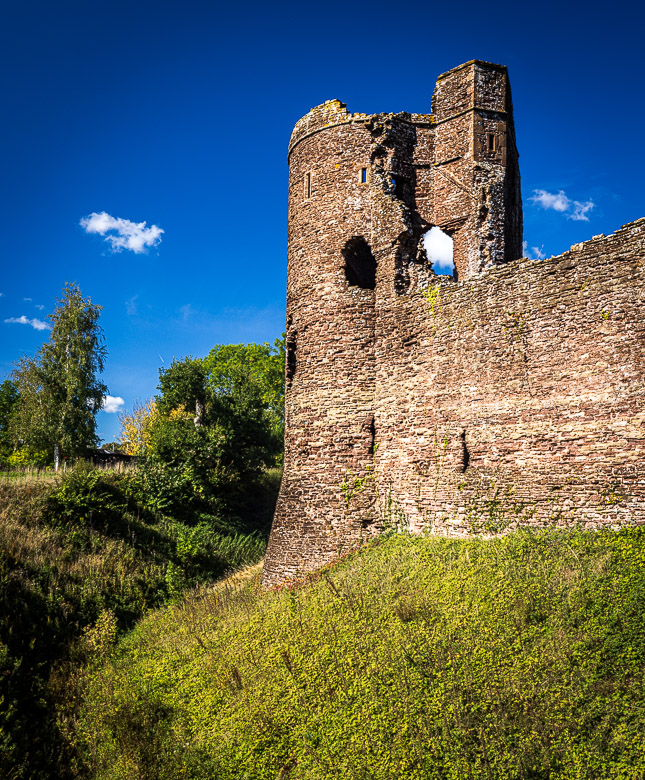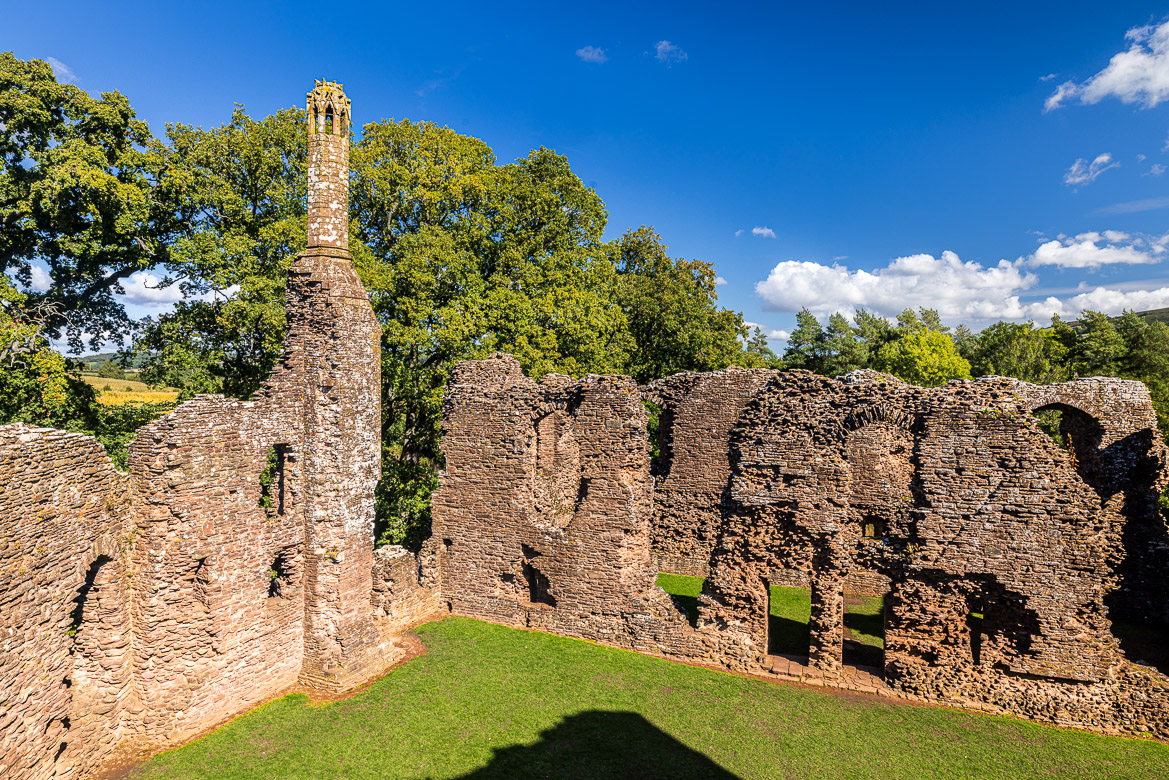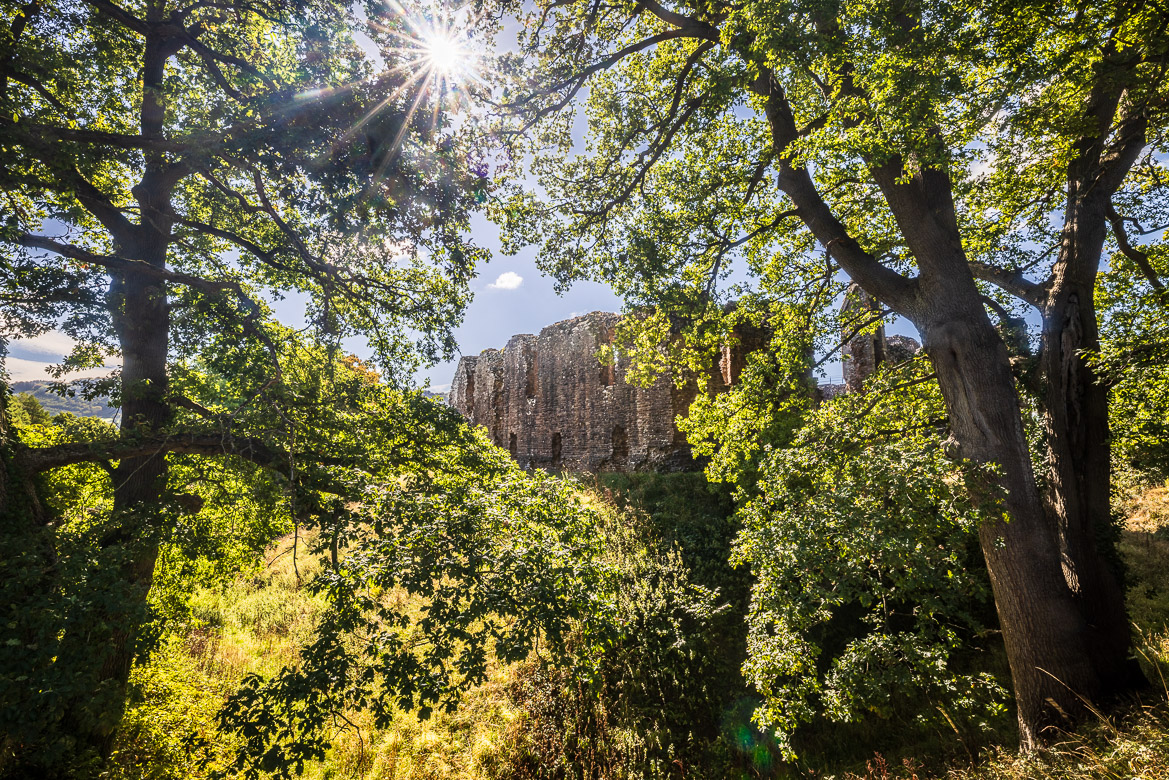
The Three Castles, Grosmont, White and Skenfrith Castle, where all built soon after the Norman invasion of England to protect the route from Wales to Hereford. They were originally earthwork designs with timber palisades of a motte and bailey construction. Probably originally erected by William FitzOsbern, 1st Earl of Hereford.
In 1135 a major Welsh revolt took place and in response King Stephen brought together the three castles to form a lordship known as the Three Castles. They continued to be very important in defending trading routes and protecting the region from Welsh attacks.
They are situated within five miles from each other between Hereford and Abergavenny in present day Wales but on the borderland between the two countries.

In 1201 King John (the same King John as is so infamous in the Robin Hood story) granted the Three Castles to his trusted servant Hubert de Burgh, who started to convert them into more effective defensive structures with stone walls and towers, moats and drawbridges. But in 1205 Hubert was fighting for the King in France. He took Chinon Castle in Touraine (not the same as the Chinon Castle at Lac Leman that I have described earlier in a post). But the castle fell, Hubert was captured and held hostage. King John took back his three castles in the Welsh Marches.
However, King John contributed to Hubert’s ransom and he was freed in 1207, but it wasn’t until 1219 until he got the castles back and could continue his building project. He was inspired by modern military architecture elsewhere. He had been in command of both Dover and Windsor Castles and of course Chinon Castle.
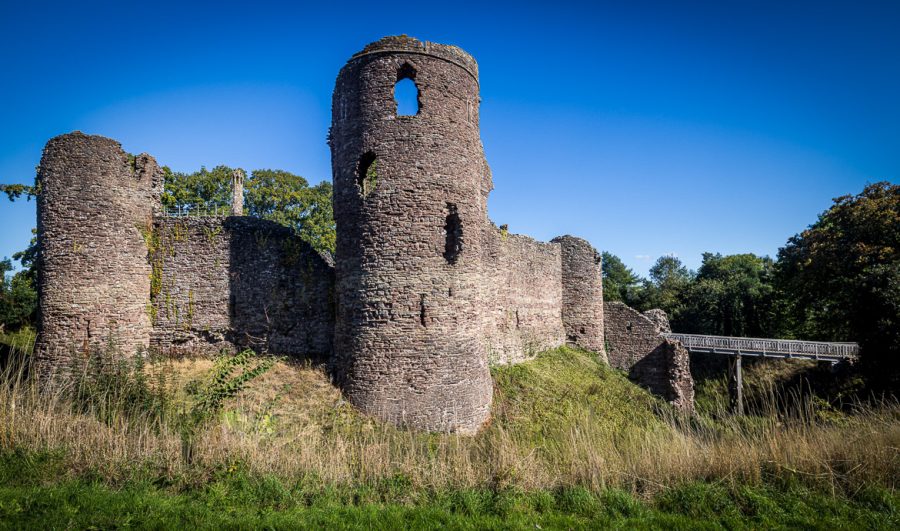
Hubert was very influential and after King John’s dead during Henry’s minority, he was appointed Regent of England, so one of the most powerful men in English politics in the 13th C. He is listed as one of the men who advised King John to sign Magna Carta in 1215.
But after a failed Welsh campaign and political in-fighting in England, Hubert was for a second time stripped of his three castles in 1232. But he had provided a total change of the Three Castles in the Welsh Marches.
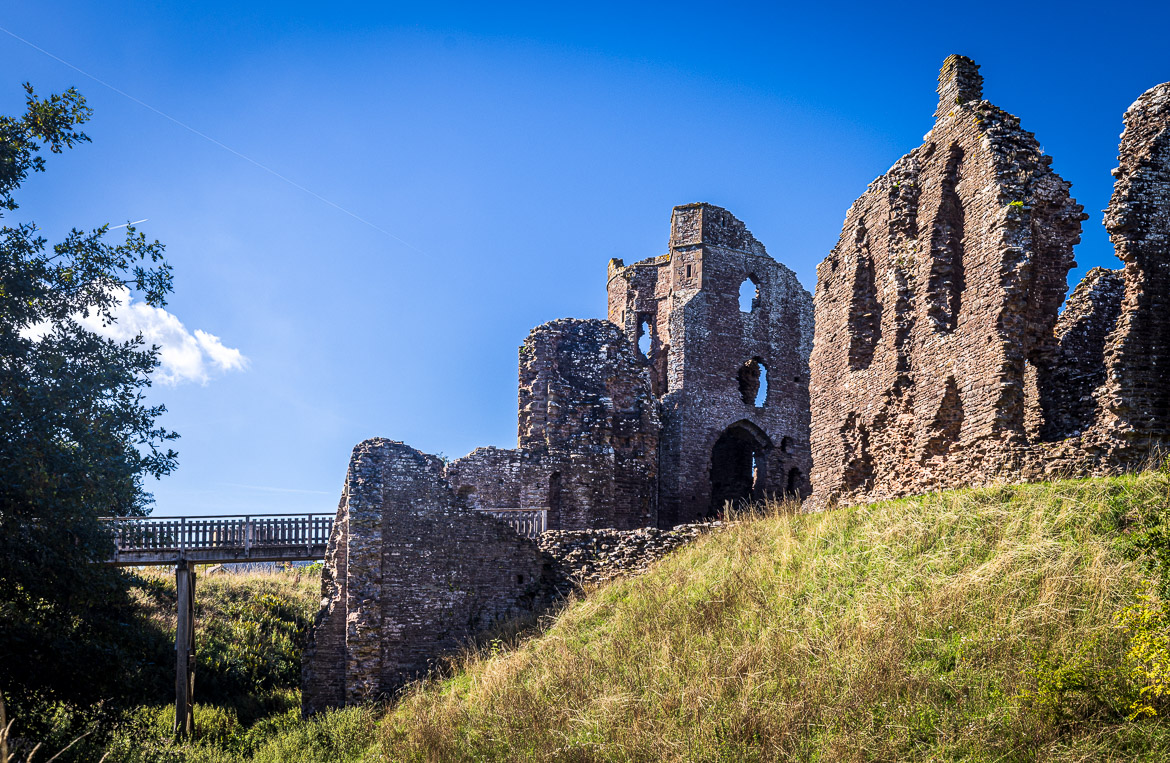
In 1234 he was back in favour again, for the third time and got back his castles only to lose them again in 1239. Certainly, turbulent times and as powerful as Hubert was, he was still totally dependent upon the king of the time.
The castles maintained its importance several hundred years thereafter. Their last military action was in 1405, when Owain Glyndwr led a revolt to overthrow English occupancy in Wales. He besieged Grosmont Castle, but a force sent by Prince Henry defeated them.
Thereafter, as peace reigned between Wales and England, the castles lost its importances and fell into ruins. And it is those ruins that I visited.


Grosmont Castle
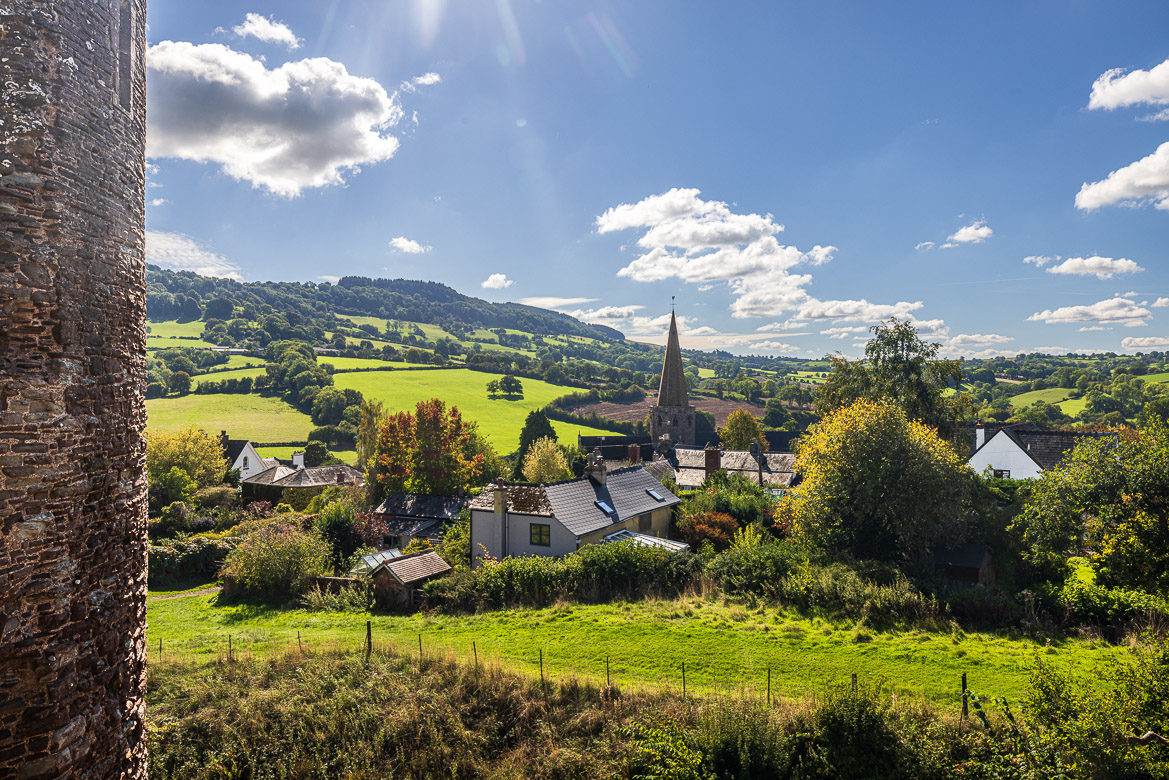
The first castle I visited of the three is Grosmont Castle, situated in the charming village of Grosmont in south Wales. My only complaint is that on my Tuesday visit the pub was closed.
The castle is built on a large mound or a Gros Mont. Hubert de Burgh replaced the timber construction with a stone building with gatehouse, curtain walls and circular towers. In the 14th century it had got apartments suitable for a noble household and a deer park was established on the castle grounds. But a century later it saw military action again during Owain Glyndwr’s attack on the castle. And in the 16th C it had fallen into ruin.
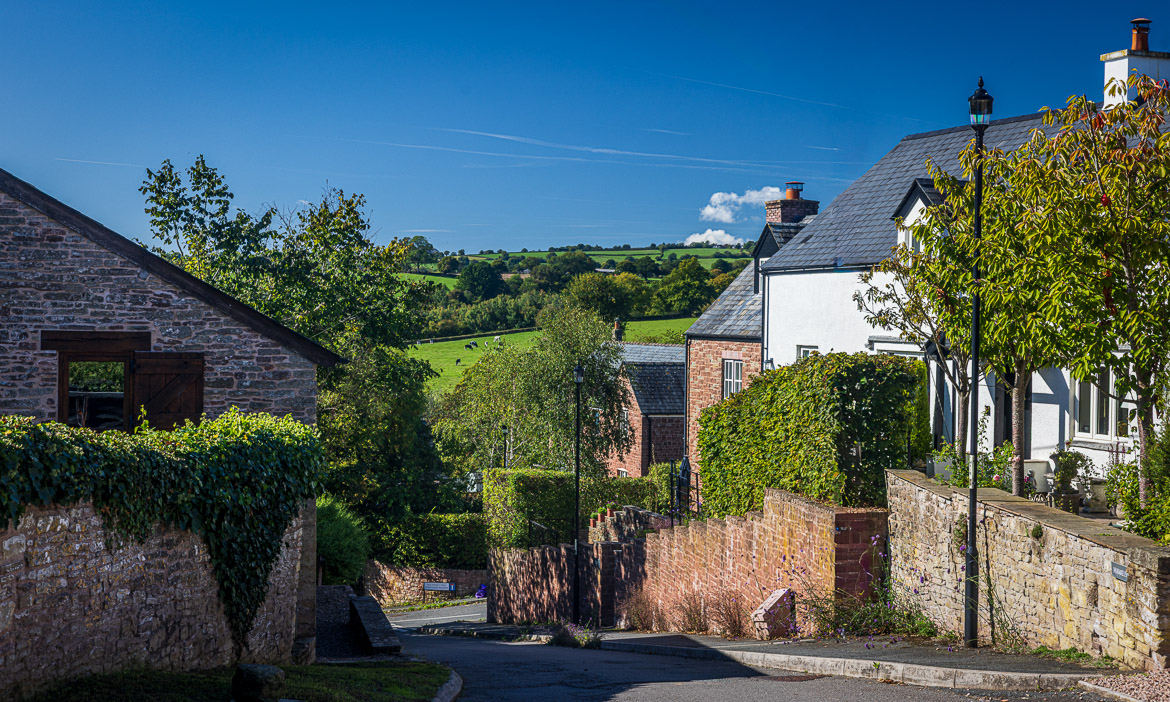

The following two posts will describe the two other castles of The Three Castles, White Castle and Skenfrith Castle.
